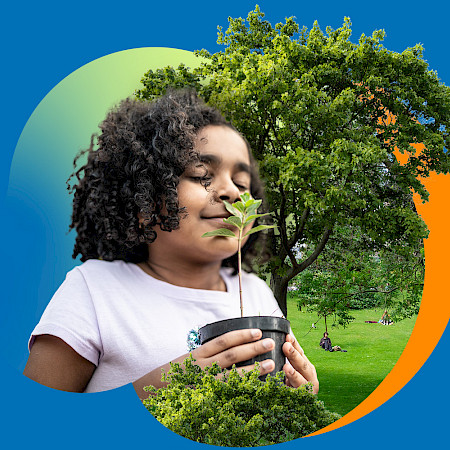
Our survival depends on the actions we take to protect nature
According to IPBES, up to 1 million species are within decades of extinction. The planet is rapidly headed towards a mass extinction event, caused by humanity. In just a few decades, we have endangered that which the planet took 4.5 billion years to create.
Biodiversity is the food we eat, the air we breathe, the clothes we wear, and the wood we use to build our homes. When we destroy it, we put ourselves at risk.
Fortunately, solutions exist. These solutions nevertheless require that the protection of nature is part of the criteria for all political decisions. It is the only responsible approach going forward.

International
- Extinction of species: Up to 1 million species worldwide, including approximately 10% of insects1, 41% of amphibians, 13% of birds and 27% of mammals, are at risk of extinction within decades2.
- Food: $235 to $577 billion US dollars’ worth of crops are at risk due to the disappearance of pollinators. 23% of lands are producing less due to depleted soil fertility, and 33% of fish stocks are being exploited at unsustainable levels3.
- Protected areas: Currently, only 17% of the world’s terrestrial ecosystems and inland waters, and 7% of coastal waters and oceans, are protected. The target for 2030 is 30%4.
- Health and safety: We depend on ecosystems to provide us with life, protection, and healing.Yet 17% of infection diseases are spread by animals as their natural habitats disappear5.
1) https://ipbes.net/es/node/35236#_By_the_Numbers
2) https://uicn.fr/liste-rouge-mondiale/
3) https://ipbes.net/es/node/35236#_By_the_Numbers
4) https://www.unep.org/fr/actualites-et-recits/communique-de-presse/le-monde-atteint-lobjectif-de-couverture-des-aires
5) https://ipbes.net/es/node/35236#_By_the_Numbers

Quebec and Canada
- Species loss: In Quebec, more than 650 animal and plant species are vulnerable, threatened or at risk6,7. In Canada, over 800 species have been designated by the Committee on the Status of Endangered Wildlife in Canada8.
- Creating protected areas: Quebec has pledged to protect 17% of its land and inland water and 17% of marine areas. In Canada, these percentages are 13% and 9%, respectively. Reaching the goal of protecting 30% of our lands and oceans by 2030 will be a major challenge.
- Conservation in the southern regions: The majority of threatened and vulnerable species are in the southern regions of Quebec and Canada. These species are in urgent need of protection. Unfortunately, most protected areas are located north of the 47th parallel.
- Ecosystem services and the economy: In Quebec and the rest of Canada, ecosystems provide invaluable services. Government spending is estimated at $235 million per year on public services to fight the loss of natural environments in the Montreal area alone9.
© JC Lemay
6) https://www.quebec.ca/agriculture-environnement-et-ressources-naturelles/faune/gestion-faune-habitats-fauniques/especes-fauniques-menacees-vulnerables/liste
7) https://www.environnement.gouv.qc.ca/biodiversite/especes-designees-susceptibles/index.htm
8) https://cosewic.ca/index.php/fr/rapports/especes-sauvages-candidates.html
9) Dupras, Alam (2014). Urban Sprawl and Ecosystem Services: A Half Century Perspective in the Montreal Area (Quebec, Canada), Journal of Environmental Policy & planning, 20 juin 2014, pp-180-200.

Solutions
The creation of protected areas is the main solution available for reducing human impacts on the loss of biodiversity. It involves national and sub-national, macro-level governmental intervention.Conservation initiatives on private land are equally necessary. It is essential to integrate protecting biodiversity at all levels of decision-making, in every area of activity. Here are a few local initiatives that are working to protect and restore natural environments and species.
- Tomorrow’s Forest Project
- “Caribou, je t’aime” campaign
- Quebec Ecological Corridors Initiative
- Programme d’excellence pour la biodiversité
- Municipal Biodiversity Fund
- PRMHH assistance for MRCs (by CREs, OBVs, OCs)
- Ecological Corridors program – Parks Canada
- Directory of private conservation sites
© Boreal River
Our demands
- Protect 30% of the territory by 2030, including habitats of endangered species and natural environments that protect our health
- Drastically reduce pesticide use and improve GMO traceability
- Adopt a policy against food waste
- Strengthen efforts to fight invasive alien species
- Invest in restoring natural environments and maintaining ecological corridors